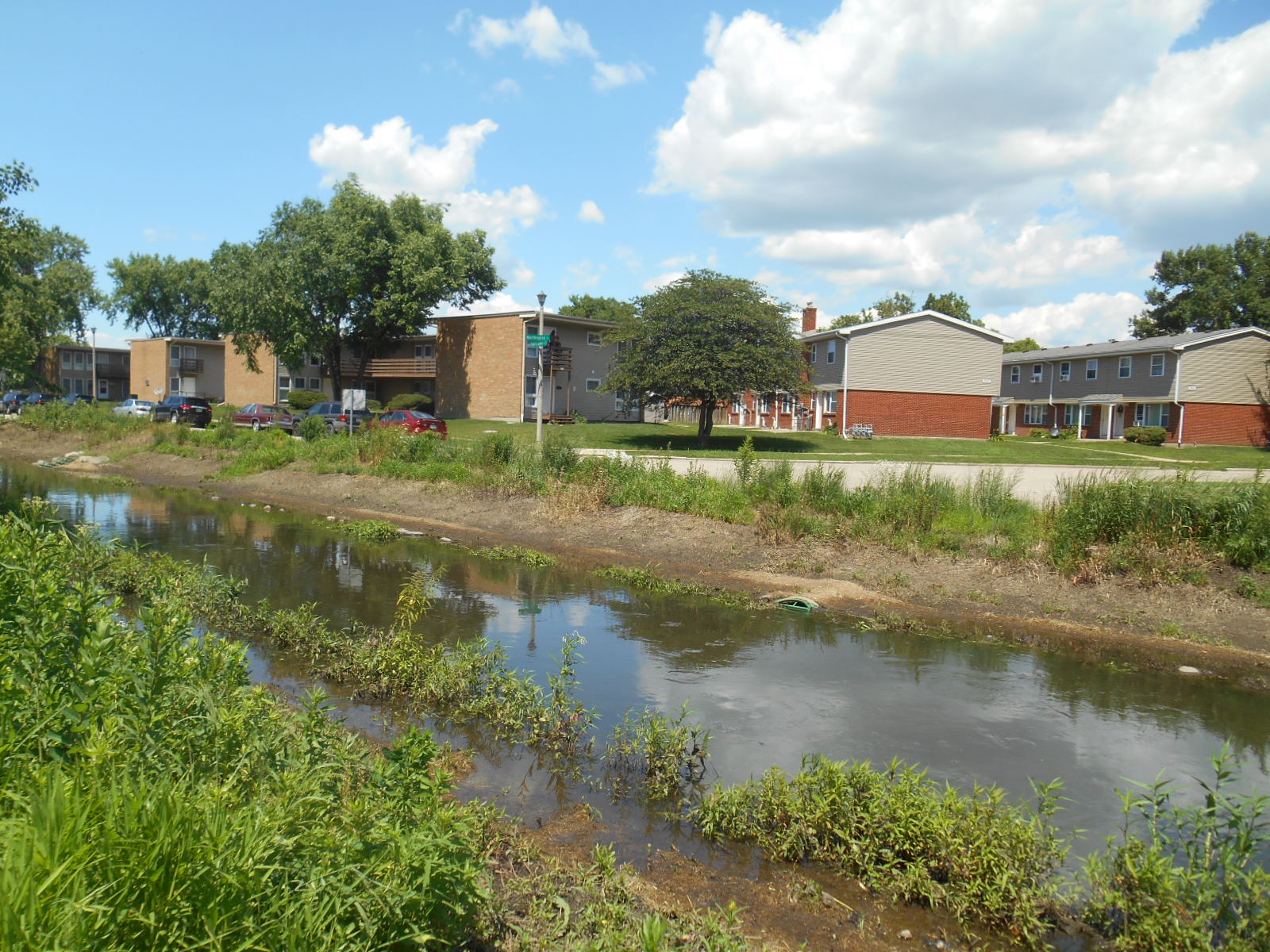Photo: Starkweather Creek in the Darbo-Worthington neighborhood (Maria Powell).
By Steve Elbow, Cap Times
Lance Green has been collecting water samples from Starkweather Creek for years. As a volunteer for the state Department of Natural Resources, he records observations of temperature, water clarity, dissolved oxygen each month. Much of that volunteer work involves actually getting into the water.
“I’ve been wading in that water in my swimsuit for years doing the monitoring,” said the retired DNR environmental specialist.
Those days are over. He just bought some chest-high waders.
“I’m taking precautions,” he said.
Green is co-director of Friends of Starkweather Creek, an advocacy group for a body of water popular with east Madison paddlers, anglers and other urban water enthusiasts. It’s also a toxic mess, listed by the state as an “impaired” waterway because of the PCBs, heavy metals, DDT byproducts and other chemicals that have fouled the water for years.
Recently, Green has become more concerned with a different pollutant: per- and polyfluoroalkyl substances, better known as PFAS. The substances have been around for decades, but improved testing methods have found them in a growing list of water supplies. The Environmental Working Group estimates that 110 million Americans — more than a third of the population — may be exposed to PFAS in their drinking water.
PFAS turned up in detectable levels in 10 of Madison’s 19 municipal wells, as well as four seasonal wells, prompting the closing last summer of Well 15 on the city’s east side, a 750-foot-deep reservoir near the Air National Guard’s Truax Field.
As an expanding body of science links the chemicals to serious health problems, and more contamination comes to light, the public is getting uneasy.
Last week, Public Health Madison and Dane County installed about 30 PFAS warning signs along Starkweather Creek telling people to avoid swallowing water and the foam that sometimes forms on it, and to wash themselves and their pets if they become exposed. In a mixed message, the signs also say the water is safe to touch.
Nationally, communities most affected by the chemicals are located near manufacturing facilities and military bases, where PFAS-containing firefighting foam had been used for training since the 1960s. Truax appears to be the primary source of Madison’s PFAS problem.
But Starkweather Creek is its poster child.
The creek is a magnet for kids from the low-income and middle-class neighborhoods through which it runs. And it’s a stormwater repository from known and suspected sources of PFAS: Truax Field, two adjacent pits once used for firefighting training, and the former Burke sewage treatment plant, once operated by the Guard and where significant concentrations of PFAS were detected last spring.
The PFAS levels in Starkweather are alarming for Maria Powell, executive director of the Midwest Environmental Justice Organization, particularly because some people depend on the fish they catch from it.
“We don’t have the data yet, but those fish are probably full of PFAS, ” she said. “Because it builds up to really high levels in fish. (The levels) can be thousands of times more than what’s in the water.”
Add to that the stormwater sources from a sewer pipe installation at Reindahl Park, a months-long project that could pump up to 150,000 gallons of PFAS-containing water each day into a storm drain that empties into the creek.
For Green, who organizes canoe and kayak events and enlists kids for creek cleanup activities, it’s no way to treat what he calls an “urban gem.”
“It’s tough because we advocate for the health of the creek and for the enjoyment of the creek,” he said, “and both of those things are now being challenged by this new PFAS threat.”
Read the rest of the article here.

